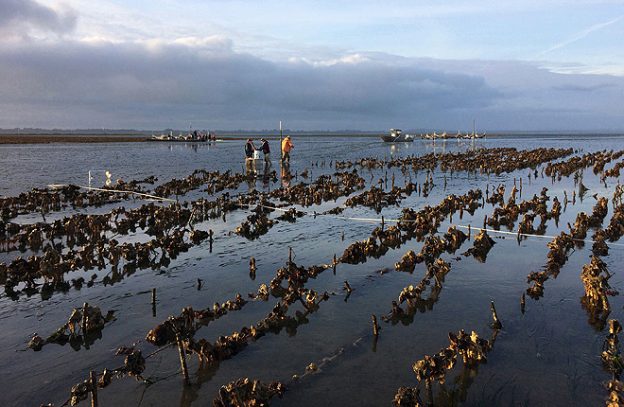Real- and near-real time OA measurements provide notice of potentially damaging acidic seawater in coastal areas where shellfish larvae are farmed. These data help shellfish growers make informed management decisions regarding their operations and help them minimize losses in revenue.
Shore Stations and Moorings
A network of monitoring stations on and near the coast measures changes in seawater chemistry. Stations are positioned throughout the CeNCOOS region and track various OA-relevant variables including pH, dissolved oxygen, temperature and salinity. These parameters are measured at several surface stations and at a subsurface seawater intake system in the Monterey Bay, allowing better monitoring of water changes from upwelling. Data from these sensors are used by scientists to determine the impacts OA is having on the region’s marine ecosystems. Through these novel approaches, CeNCOOS is charting new territory in understanding ocean pH along our coasts.
Autonomous Underwater Vehicles
The deployment of autonomous underwater vehicles (AUVs), including profiling gliders, is an important tool in measuring changing ocean conditions throughout the region. CeNCOOS integrates data from several of the region’s gliders to better understand the dynamics of ocean acidification. Our partners are also working to develop specialized sensors that can be deployed on gliders to measure pH and other OA variables in waters where it is not possible to install monitoring stations.
OA-Related Partnerships
C-CAN
The West Coast Ocean Observing Systems — including CeNCOOS, SCCOOS and NANOOS — are working to inventory OA monitoring stations along the California, Oregon and Washington coastlines to provide a more accurate picture of ocean acidification trends along the Western U.S. The observing systems collaborate directly with the California Current Acidification Network (C-CAN), which brings together scientists, commercial fishermen, shellfish growers and resource managers to better understand the impact ocean acidification is having on marine organisms and coastal habitats throughout the region.
Additionally, CeNCOOS is an active partner with the West Coast Governor’s Alliance (WCGA) on Ocean Health that maintains a focus area on ocean acidification.
California State Water Resources Control Board
We’ve partnered with SCCOOS and California’s State Water Resources Control Board (SWRCB) to test various methods of monitoring OA in state coastal waters. CeNCOOS has contributed three OA monitoring locations for inclusion in the first year of a SWCRB pilot project aimed at determining the best practices for measuring ocean pH using a common sensor.
OA Monitoring at Hog Island Oyster Company
With funding from the IOOS Marine Sensor Innovation Program, CeNCOOS has installed a cutting edge OA instrument in partnership with Hog Island Oyster Company in Tomales Bay. The monitoring effort is led by researchers at UC Davis Bodega Marine Lab and is allowing researchers to better track the impacts of ocean acidification on shellfish aquaculture. Data collected is compared with other measurements in Tomales Bay, and lessons learned from these operations will be applied to future coastal measurements of ocean acidification. This kind of industry-academic partnership is integral to addressing OA and its impacts to California.

